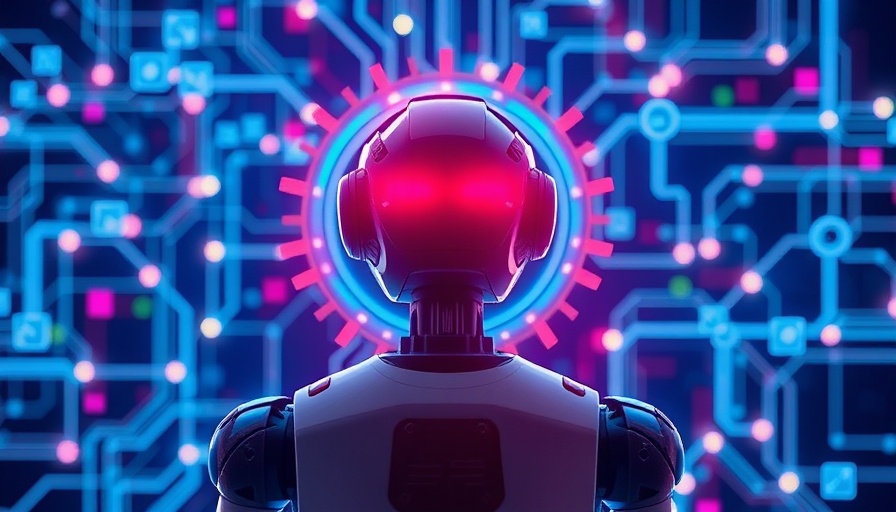
AI’s Dual Role in the Workforce: A Balancing Act
Artificial Intelligence (AI) continues to reshape the future of work, presenting a conundrum filled with both opportunities and threats. Echoing fears reminiscent of past technological upheavals, experts and the public alike grapple with the potential effects of AI on employment. Throughout history, innovation has sparked debates on workforce displacement; from Queen Elizabeth I’s rejection of a knitting machine patent in 1589 to modern-day concerns over robots potentially taking jobs, apprehension is deeply rooted in societal perspectives. However, similar to the waves of industrial revolutions that preceded it, AI also holds the promise of job creation and enhanced productivity.
Changing Employment Landscapes: Opportunities for All
According to a report by the Center for American Progress, advanced AI tools are likely to redefine various roles across the occupational spectrum. Studies suggest that up to two-thirds of current jobs are exposed to some degree of AI automation, and some roles could experience a complete transformation due to the rising prominence of generative AI technologies. The potential for job loss is not the sole narrative; AI can complement human work, enhancing productivity while allowing workers to engage in more innovative tasks. For instance, data from the International Federation of Robotics indicates that companies investing in AI are shifting towards more educated and specialized workforces, increasing demand for soft skills and emotional intelligence.
A Closer Look at Gender and Racial Implications in AI Integration
The impact of AI on diverse demographics raises critical discussions. Women, Black, and Latino workers are particularly vulnerable due to occupational segregation within the labor market. Data points to an overrepresentation of women in roles susceptible to automation, while their counterparts in higher-paying positions are predominantly male. Careful policy consideration is necessary to avoid exacerbating existing wage gaps and work disparities as AI systems are integrated into workplaces. Legislative discussions, as highlighted in recent dialogues by leaders like Chuck Schumer, emphasize the importance of a worker-centered approach in AI’s deployment.
Combatting Job Displacement: The Need for Action
Policymakers are called upon not just to acknowledge the risks of labor displacement from AI but to actively engage in fostering a future that benefits all workers. A multifaceted response, centered on providing adequate training, protection, and social safety nets, is essential. Important measures may include enhancing unemployment insurance systems and adopting robust job guarantee programs. By facilitating reskilling opportunities, governments can help workers navigate the transition to an increasingly automated workforce effectively.
Insights from Global Perspectives on AI’s Role in Employment
A study from the Humanities and Social Sciences Communications journal highlights the dynamics of AI’s impact on labor from a global lens. Notably, countries like China have witnessed industrial upgrades through AI application, which, contrary to common fears, may actually boost employment in certain sectors. The integration of robots in industries has shown a tendency to increase labor demand in high-skilled positions, showcasing how AI can modify rather than eliminate job opportunities.
Policy Recommendations for AI-Driven Job Futures
To maximize the numerous advantages AI offers while mitigating its drawbacks, experts suggest plans for government initiatives that ensure the smooth integration of AI in labor markets. These may include:
- Investment in Training and Upskilling: Funding for educational programs that prepare the current workforce for the evolving demands posed by AI should be prioritized.
- Inclusive Policy Frameworks: Legislative measures should focus on protecting vulnerable worker populations, particularly women and minorities, by promoting technology that complements rather than replaces human labor.
- Proactive Labor Market Policies: Emphasizing strong bilateral cooperation between the public and private sectors can foster environments conducive to job creation amidst technological changes.
Conclusion: Shaping Tomorrow’s Workforce with AI
While robotic automation and AI present legitimate concerns regarding job security, the reality is that embracing innovation brings about an opportunity to redefine the workforce for the better. The combination of historical context and current research reflects a future filled with new potential. As we stand at the threshold of this technological wave, a balanced approach embracing both the innovative capabilities and the safeguarding of workers will shape the legacy of AI in our workplaces.
Call to Action: Join the conversation on AI in the workplace and advocate for policies that promote the intelligent integration of technology while prioritizing workforce welfare. Your voice matters in shaping a future that works for everyone.
 Add Row
Add Row  Add
Add 




 Add Row
Add Row  Add
Add 

Write A Comment